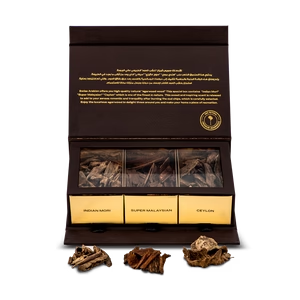The Enchanting World of Oud Agarwood Perfume: A Journey Through Scent
Oud, also known as agarwood, is one of the most prized and unique ingredients in the world of perfumery. Harvested from the heartwood of aquaria trees, oud is revered for its rich and complex fragrance. This article takes you on an olfactory journey, exploring the history, production, and allure of oud agarwood perfume.
The Origins of Oud
Oud has a history that spans centuries, deeply rooted in Middle Eastern and South Asian cultures. It is mentioned in ancient texts and has been used in religious rituals, as a symbol of hospitality, and as a luxury fragrance. The rarity and difficulty in harvesting oud wood, which involves a natural infection process in the tree, make it one of the most expensive raw materials in the world.
The Production of Oud
The production of oud is a fascinating process. When the aquaria tree is infected by a particular mold, it produces a fragrant resin in response, which saturates the heartwood. The infected wood is then harvested and distilled to extract the precious oud oil. This process can take several years, contributing to the rarity and value of the oil.
The Scent Profile of Oud
Describing the scent of oud is challenging due to its complexity. It is often characterized by a deep, woody base with notes that range from sweet and smoky to rich and animalistic. Each batch of oud can have a slightly different fragrance profile, depending on factors like the species of tree, the region it was grown in, and the extraction method used.
Oud in Modern Perfumery
In modern perfumery, oud is a cherished ingredient for its depth and longevity. It's used in both men's and women's fragrances and is often blended with notes like rose, sandalwood, and spices to enhance its intricate profile. Oud perfumes are known for their long-lasting properties, making them a favourite among fragrance enthusiasts.
The Cultural Significance of Oud
Oud holds immense cultural significance, particularly in the Middle East. It's not just a fragrance but a part of the cultural identity, often used in personal grooming, in homes, and at social gatherings. The scent of oud is associated with warmth, hospitality, and luxury.
The Therapeutic Benefits of Oud
Beyond its use in perfumery, oud is also valued for its therapeutic properties. It is believed to have calming effects, helping to alleviate stress and anxiety. In some cultures, oud is used in traditional medicine for its supposed health benefits.
Choosing an Oud Perfume
When selecting an oud perfume, consider
Concentration: Oud fragrances come in various concentrations, from lighter eau de toilette to more intense eau de parfum.
Complementary Notes: Pay attention to the other notes blended with oud to find a scent that resonates with your personal preference.
Authenticity: Due to its high value, there are many synthetic oud fragrances in the market. Look for reputable brands that use genuine oud oil.
The Future of Oud
With its growing popularity, there's an increasing concern about the sustainability of Oud production. Ethical sourcing and cultivation efforts are becoming crucial in the industry to ensure the future availability of this precious ingredient.
Conclusion
Oud agarwood perfume is not just a fragrance; it's an experience that transcends the senses. Its rich history, intricate production process, and unique scent profile make it a treasure in the world of perfumery. Whether you're a perfume connoisseur or new to the world of fragrances, exploring oud-based perfumes can be a mesmerizing journey into the depths of one of nature's most exquisite offerings.



Comments
Post a Comment